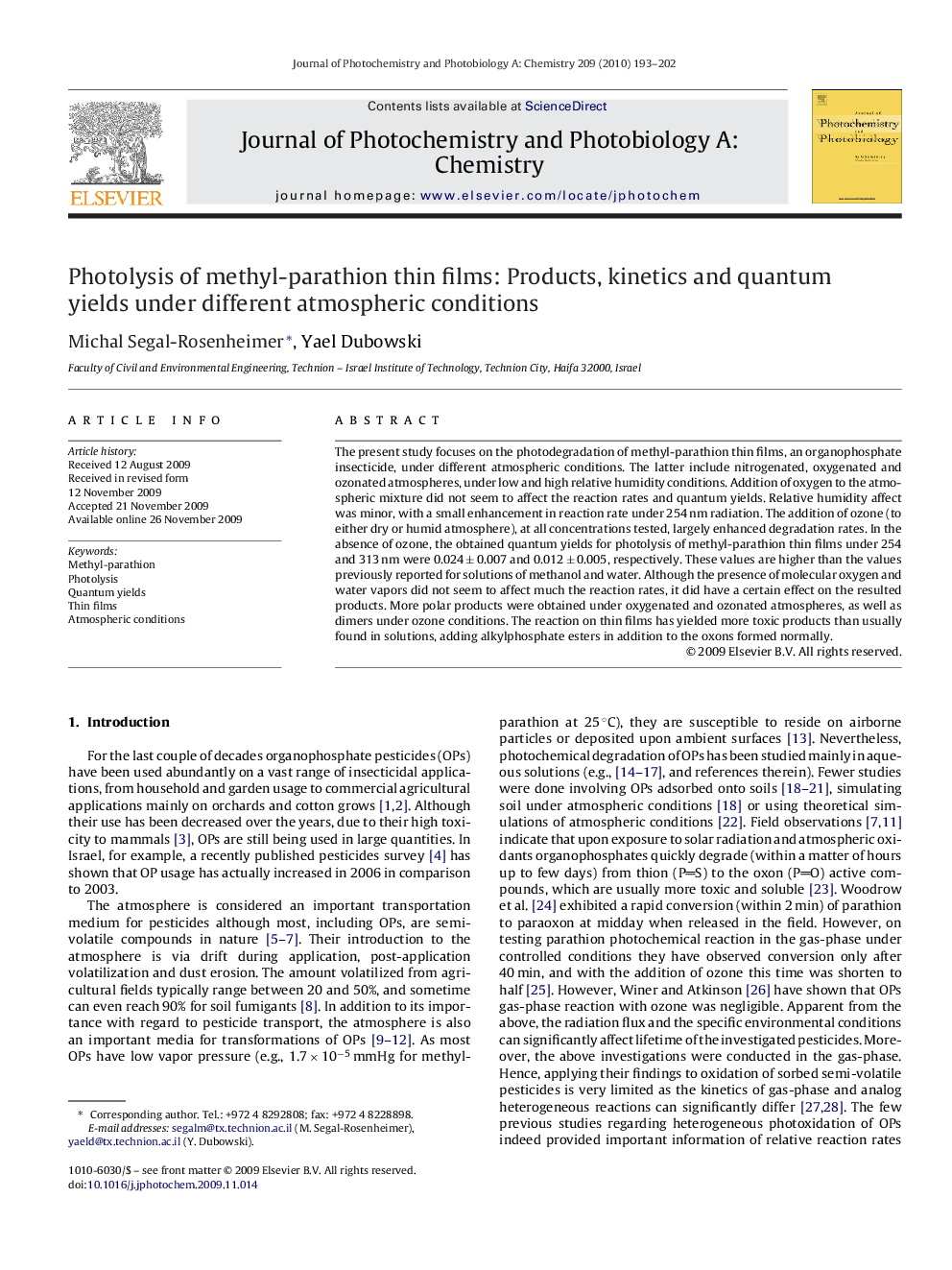| Article ID | Journal | Published Year | Pages | File Type |
|---|---|---|---|---|
| 27160 | Journal of Photochemistry and Photobiology A: Chemistry | 2010 | 10 Pages |
The present study focuses on the photodegradation of methyl-parathion thin films, an organophosphate insecticide, under different atmospheric conditions. The latter include nitrogenated, oxygenated and ozonated atmospheres, under low and high relative humidity conditions. Addition of oxygen to the atmospheric mixture did not seem to affect the reaction rates and quantum yields. Relative humidity affect was minor, with a small enhancement in reaction rate under 254 nm radiation. The addition of ozone (to either dry or humid atmosphere), at all concentrations tested, largely enhanced degradation rates. In the absence of ozone, the obtained quantum yields for photolysis of methyl-parathion thin films under 254 and 313 nm were 0.024 ± 0.007 and 0.012 ± 0.005, respectively. These values are higher than the values previously reported for solutions of methanol and water. Although the presence of molecular oxygen and water vapors did not seem to affect much the reaction rates, it did have a certain effect on the resulted products. More polar products were obtained under oxygenated and ozonated atmospheres, as well as dimers under ozone conditions. The reaction on thin films has yielded more toxic products than usually found in solutions, adding alkylphosphate esters in addition to the oxons formed normally.
